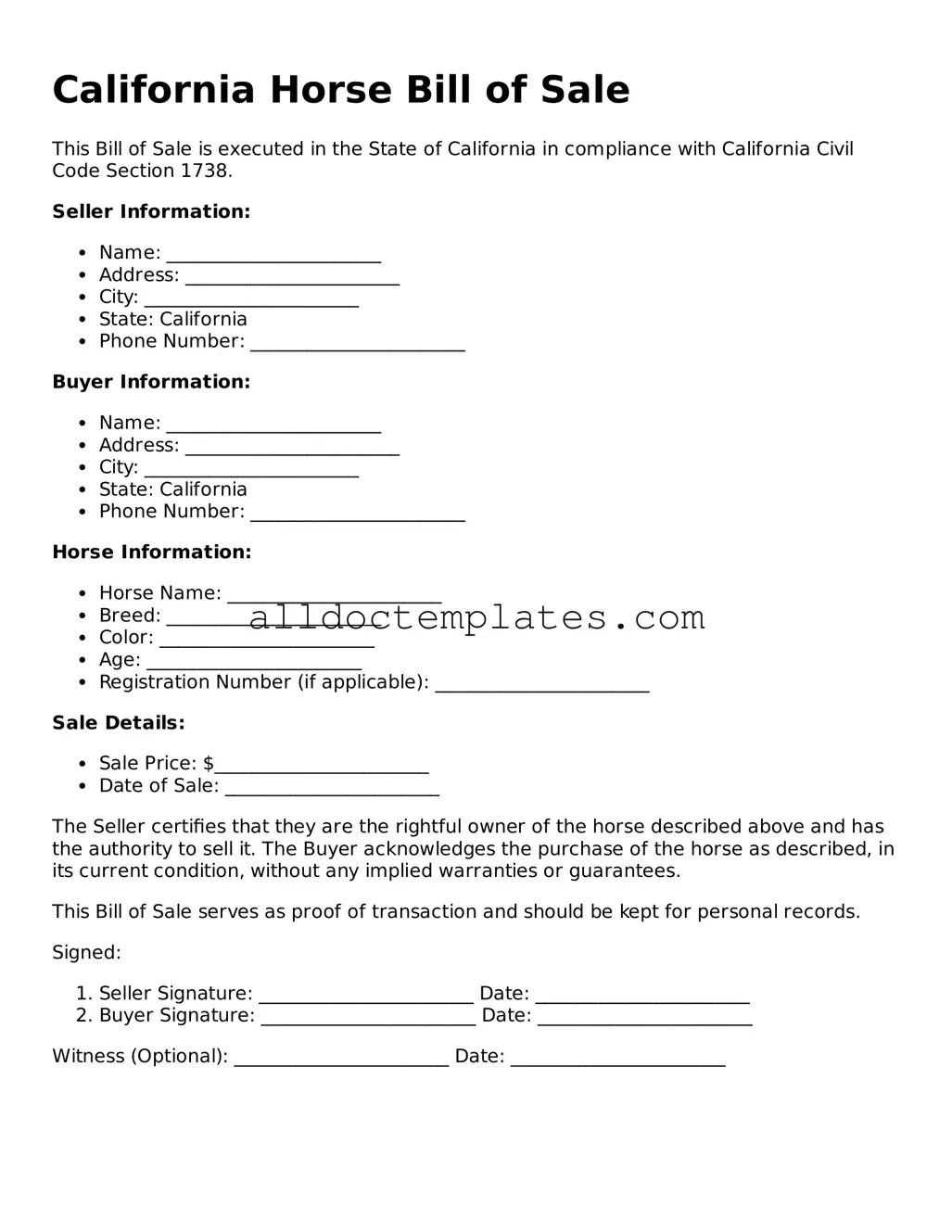California Horse Bill of Sale
This Bill of Sale is executed in the State of California in compliance with California Civil Code Section 1738.
Seller Information:
- Name: _______________________
- Address: _______________________
- City: _______________________
- State: California
- Phone Number: _______________________
Buyer Information:
- Name: _______________________
- Address: _______________________
- City: _______________________
- State: California
- Phone Number: _______________________
Horse Information:
- Horse Name: _______________________
- Breed: _______________________
- Color: _______________________
- Age: _______________________
- Registration Number (if applicable): _______________________
Sale Details:
- Sale Price: $_______________________
- Date of Sale: _______________________
The Seller certifies that they are the rightful owner of the horse described above and has the authority to sell it. The Buyer acknowledges the purchase of the horse as described, in its current condition, without any implied warranties or guarantees.
This Bill of Sale serves as proof of transaction and should be kept for personal records.
Signed:
- Seller Signature: _______________________ Date: _______________________
- Buyer Signature: _______________________ Date: _______________________
Witness (Optional): _______________________ Date: _______________________
